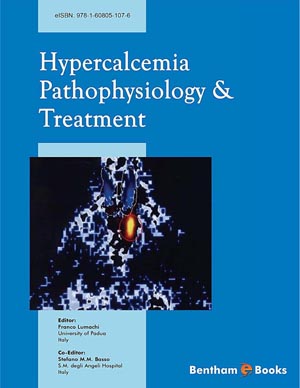Abstract
In patients with hypercalcemia the surgical treatment is likely limited to those with primary hyperparathyroidism (HPT), which represents the most frequent cause of this biochemical alteration. Hypercalcemia may also occur in up to 30% of patients with cancer, but unfortunately they are usually unsuitable for surgery. Surgery of parathyroid glands is particularly challenging, because PT anatomy is one of the variables of our organism. The treatment of choice for patients with symptomatic primary HPT is removal of the affected parathyroid(s), that can be achieved both by surgical and non-surgical techniques. The latter is used only in selected patients, when surgery is contraindicated. In asymptomatic patients, surgical parathyroidectomy is usually suggested to prevent complications, but its role is controversial. Bilateral cervical exploration has been the procedure of choice for decades, and it is still mandatory in case of suspicion of multiglandular disease or malignancy, and multiple endocrine neoplasia or familial syndromes. Recent advances in preoperative localization studies, and intraoperative adjuncts, such as quick parathyroid hormone assay, encouraged as a less invasive surgery. Currently, minimally invasive parathyroidectomy is widely performed, both videoassisted and radioguided. Considering the significant improvements of clinical features of the disease after surgery, and the effectiveness and safety of minimally invasive surgical techniques, parathyroidectomy should be suggested both in symptomatic patients and in those with minimally symptomatic primary HPT. However, each patient should be referred to an experienced parathyroid surgeon or endocrinologist, with the aim of having a better definition of the disease, and the best recommendation for treatment.






















